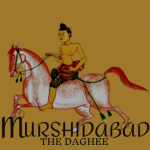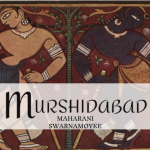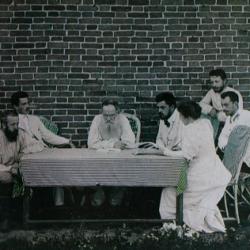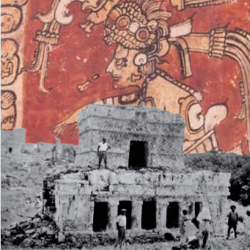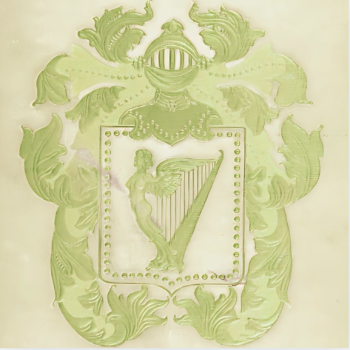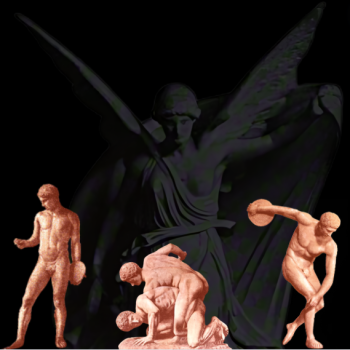THE PAVANE OF AN INDIAN DYNASTY
Johnston turned twenty-two on February 17, 1889. He and Verochka likely attended the opening of the Murshidabad Exhibition ten days later, on February 27, 1889.[1] The event was hosted by the Nawab in the Mubarak Manzil, a mansion in his family’s possession. The Nawab had taken great interest in the Murshidabad Exhibition from the beginning.[2] A generous philanthropist, the Nawab recently made a donation of Rs. 2,000 toward the construction of Lady Dufferin’s Zenana Hospital in Calcutta.[3] He also donated Rs.5,000 to the Calcutta Zoo which allowed for the completion of the Tropical Bird House to be known as “The Murshidabad House.” Not forgetful of local needs, he also donated Rs. 700 toward the construction of a bund on the Bhagirathi River at Sadugbagh.[4] Though the country was protected by an embankment, “it was always a question whether the earthwork was secure,” during the height of the monsoon.[5]
Alexander Smith, Commissioner of the Calcutta Division (Presidency Division,) presided over the ceremony of which “a large gathering of ladies, European and Native gentlemen, and members of the Nizamat family” were in attendance. Tuite-Dalton explained the nature and origin of the Exhibition and said that it could not equal the Calcutta Exhibition, but that it was not inferior to the district exhibition held elsewhere.[6] Various objects of ivory, the chief specialty of Murshidabad, were on display, including a large procession with elephants, horses, and the cars of Jaganath. Nitya Gopal Mukerji’s silk exbibit included a collection of cocoons and raw silk from all parts of the world. The bidri work (inlaid silver and gold on a composition of lead and other metals) of Murshidabad was also plentifully displayed. The native community of all castes and classes filled the Nawab’s garden-house, the Humayon Munzil, where the collection of agricultural produce, especially dhan (unhusked rice/paddy,) was very large. The proceedings were enlivened by the Nawab’s band, and by elephant races and other sports. (The Nawab had nearly thirty elephants which he kept at enormous expense, and only for occasional use; but to be deprived of these gentle mammoths meant robbing the Nawab of his own self-respect and the reputation of the Nizamat, for it was said that “no native potentate can sustain his dignity without elephants.”)[7] The first day of the exhibition closed with a dance performance by the Santal, a hill people from neighboring, semi-autonomous Santal Parganas.[8]
The Nawab of Murshidabad, Hassan Ali Mirza (1846-1906,) was the eldest of Nawab Sayyid Mansur Ali Khan nineteen sons. Known as the “Burra Sahib,” in his youth, he was a quiet man, with a kind disposition and charming manners. Though Hassan was shy, he was also “amiable, steady, and anxious to learn,” and “displayed a high moral standard, and firmness,” traits which many believed were inherited from mother, Nawab Mhir Luka Begum Saheba, an Abyssinian slave-girl.[9] Being a spiritual man, a Shia Muslim, Hassan never neglected his daily prayers and the Qur’an and Tasbih were placed in an honored spot above his bed. Every day he distributed betel to his people, and in the evening, he drove through Murshidabad to listen to “the wails and cries of want and poverty.” This was done so that he might better facilitate the immediately relief of his people. Hassan’s practices were “a silent, but most eloquent lesson to many.”[10]
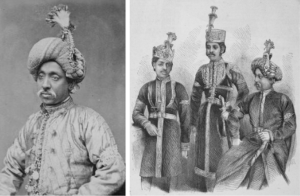
Nawab Nazim Sayyid Mansur Ali Khan & Sons.
In 1865, when he was nineteen, Hassan and two of his brothers, Hussain Ali Mirza “Mujlah Huzur,” and Mahomed Ali Mirza “Syed Amir Sahib,” and traveled to England with Colonel Herbert so they might “visit places of interest,” and “invite comparison between the ways of the East, and the West.” The chief reminiscences that Hassan brought away from his year in England, however, were his acquaintance with the Prince of Wales, and his instruction in billiards.[11] The princes returned to India in 1866.[12]
At the end of the 1860s, Feradun Jah was in a difficult financial position. It was his responsibility to distribute the Government pension to his large family. He was advised by men of position in India to travel to England and make a case for more funds. In February 1869, Hassan and Feradun Jah were received at Dover by Queen Victoria’s bodyguard with honors usually reserved for independent potentates. He moved the matter into Parliament but was defeated in his attempt by a large majority of unfavorable votes.[13] During this trip Feradun Jah met a young English woman named Sarah Venell, whom he would marry. The marriage took place in May 1870 and celebrated according to the laws of Shi’a Islam.[14] A year later Sarah had given birth to her first child, Miriam. After a stay of three years in England, Hassan left his father, and returned to Murshidabad. While his father remained in England, Hassan would administer the affairs of the Nizamat.
In 1873 the British Government assumed management of the Nizamut finances and the stipend for the Nawab Nazim. This, it was said, was “to preserve the dignity and honor of an exalted Indian family and that public sentiment may not be hurt by their fall into poverty.” By 1875 Sarah had two more children, a girl named Vaheedoonissa, a boy named Syed, and pregnant with her fourth, a boy named Nusrat. For the security of her children, as well as herself, Sarah asked the Nawab Nazim to testify to the legitimacy of their marriage before the acting Lord Mayor of London, Robert Carden. The Nawab agreed and signed an indenture affirming that Sarah was endowed £10,000 as part of the marriage contract and securing for their daughters (and any subsequent children) £5,000 from the Nizamat Fund when they reached the age of twenty-one.[15]
Feradun Jah did not wish to return to Murshidabad. He was living beyond his means, and the British Government felt compelled to appoint a Commission to settle the affairs with the Nawab’s creditors in 1880. As he advanced in age, and his health declined, he expressed a desire to spend the remainder of his years in Karbala, Mesopotamia, where his ancestor, Imam Husain, was martyred. The Government, however, insisted upon either his returning to Murshidabad, or abdicate his position and privileges as the Nawab of Bengal. Feradun Jah abdicated his title and renounced all of his claims on the British Government. In agreement with the British, Feradun Jah chose Hassan to succeed him, though he, and his successors, would be known by the new title, “Nawab of Murshidabad.” In compliance for accepting his abdication, Feradun Jah received a lump sum of £83,000, and an annual stipend of £10,000. In early January 1881, Sarah’s four children moved to India to begin a new life at Hazarduari Palace. Hassan greeted them in English, and escorted them to the palace of their grandmother, Gaddanashin Begum (First Lady,) and introduced them to their extended family.[16]
Hassan immediately began to formulate schemes for the management of the Nizamat affairs. There were palace intrigues, of course. Feradun Jah’s seventh son, Iskunder Ali Mirza, “Sultab Sahib,” was “on terms of rivalry,” with Hassan. Sultan Sahib’s mother was a lady of higher rank than the Hassan’s and believed that he ought to be the prospective Nawab of Murshidabad.[17] The intrigue ultimately mattered very little. On March 27, 1883, Hassan Ali Mirza was formally installed as the first Nawab of Murshidabad in an impressive ceremony at Hazarduari Palace performed by the Lieutenant-Governor, Rivers Thompson.[18] Two weeks after the ceremony the Nawab invited Olcott (who was conducting mesmeric healings in Berhampore) to stay as his guest at the palace. Olcott writes:
I left for Berhampore [on April 4, 1883] in the Murshidabad District. Our Jain members of Azimganj met me […,] and after giving me the usual garlands, bouquets, perfumed sprinklings, and refreshments, conducted me in grand state to a flower-wreathed boat in which I was taken across the river to some showy carriages sent from Berhampore for my use, in charge of my tried and trusty friend Dinanath Ganguli, Government Pleader. The reception at Berhampore was as gaudy as that on my previous visit, and the enthusiasm and welcome equally hearty. Then were healings of the sick, a lecture in the open air of a large courtyard that was prettily illuminated for the occasion, and a large meeting of the local Branch with seven new members admitted. The third day I left, in charge of the Dewan and Private Secretary of the Nawab Nazim of the Lower Provinces, who had been sent to invite me to pass a night at his Highness’ Palace at Murshidabad. My host and I had a long talk together that evening, and I passed a good night despite the luxurious surroundings, which offered so great a contrast to my quarters in the bamboo screen and grass-thatched hut and the other strange houses in which I had so recently been entertained. It was amusing to see the Nawab’s gleeful astonishment when, the next morning, I relieved a huge Pathan, of his military establishment, of a severe attack of sciatica before resuming my journey towards Azimganj.[19]
Olcott’s escorts to the palace, “the Dewan and Private Secretary of the Nawab Nazim of the Lower Provinces,” who occupied the two highest offices in the Nawab’s state, were men “of conspicuous merit,” Khondakar Fuzli Rubbee (the Nawab’s Dewan,) and Janaki Nath Paure (the first graduate of Berhampore College and “ornament to the Sanctorum of the Secretariat.”)[20]
In mid-September 1883, a strange atmospheric phenomenon appeared in the skies over India. A bright green sun, at sunrise and sunset, appeared as a “rayless globe,” at which one could easily look, and “so sharply defined that sunspots could well be seen with the naked eye.”[21] “Mahometans among them were looking for a novelty in the solar system which would assure the Faithful that the end of the world is approaching in the manner foretold.”[22]’[23] It was assumed that this event was the result of the eruption of the volcano on Krakatoa. Attention was placed on the extraordinary seismic events taking place all over the world from 1878-1883. One of the primary features of the “subterranean forces in the new earthquake period,” was the widespread nature of the phenomena. “The manner in which old volcanoes, whose chimneys had grown cold centuries earlier,” it was said, “suddenly began to first smoke and then belch forth clouds of ashes and streams of lava.” A singular phenomenon, which awakened both curiosity and alarm, was the discolored appearance presented by the sun, which in addition to its appearance in Southern India, also occurred in Venezuela.[24]
A week after the appearance of the “Green Sun,” the Nawab’s brother, Mahomed Ali Mirza “Syed Amir Sahib,” died after a prolonged illness.[25] A month after that, the Nawab’s father, Mansur Ali Khan, suffered a debilitating stroke. In response, Feradun Jah drafted a will naming Hassan, James Lyster O’Beirne (his secretary,) and Mowbray Walker (his lawyer,) as guardians of his younger children (in the event of his death.)[26] Feradun Jah met his death from cholera in October 1884. In accordance with his father’s will, Hassan sent Syed and Nusrat to England for their education, under the guardianship of Walker and O’Beirne. There, in accordance with the deed to which Sarah was a party, the two boys were raised as Muslims under the tutelage of Walker. Miriam and Vahedoonissa, who now spoke fluent Urdu, remained in Murshidabad under the guardianship of Hassan, and accepted their life in the palace compound of their grandmother.
Olcott made a second trip to Murshidabad on July 8, 1885. He planned on meeting Nobin K. Banerji at Berhampore, but, like Feradun Jah, the President of the A.B.B.T.S. died from cholera.[27] Hassan had developed a lively interest in the cause of Theosophy and invited Olcott to dine at Hazarduari as his guest. At the Palace, Olcott, Hassan, and one of younger brothers of the Nawab held lengthy discussions on matters of science and religion.[28] Hassan’s fourth son, Syud Asaf Ali Mirza, was born a month earlier.[29] Olcott returned to Berhampore and delivered lectures at Grant Hall and the Cantonment Theatre Hall. At the latter lecture, Olcott was introduced by J. Anderson, the Collector of Murshidabad, and Tuite-Dalton’s predecessor.[30]
Less than a week after Olcott left Murshidabad, the devastating Manikganj Earthquake visited the district, damaging most of the large buildings on the Nawab’s palatial compound, and serving as a portent for things to come.[31] In early August, Sarah Begum asked the court for total custody of her four children, arguing that her marriage to the late-Nawab was invalid in accordance to English law, and therefore her children were illegitimate. It was a unique problem for the courts. English law typically granted automatic custody to the mother at this time, provided that her children were “illegitimate.” Mothers, however, held no legal rights over their children if they were born in legal wedlock. By claiming that her marriage to the late-Nawab was illegitimate, Sarah had a greater chance of gaining custody of the children. This trade off meant a forfeiture of pension provided for a widow of the Nawab of Bengal. Hassan was sympathetic, but O’Beirne and Walker refused to surrender custody of the boys.[32]
In 1887 Hassan was created a K.C.I.E., and in May of that year the Eastern titles Ihtisham-ul-Mulk, Raes-ud-Dowla, and Amir-ul-Omrah were conferred upon him. But peace was threatened in Bengal. Two months later, in July 1887, Olcott returned to Murshidabad, writing:
Berhampore, seat of an old, active, ever-staunch Branch which has played so noted a part in our early Indian history, gave me a royal welcome. I was the guest of Dr. Ram Das Sen, the Orientalist, so well-known in Western lands, and after the usual public and private meetings, I left for Murshidabad, where my friend the Nawab had bidden me to visit him at his Palace. I stopped over night with him, lectured on “Islam” to a very uncomfortably packed house, took his Dewan into membership, and then returned to Calcutta once more. So ended this long circuit of my ten thousand mile Indian Journey of 1887.[33]
As Olcott mentioned, Khondkar Fazl Rubbee, the Nawab’s Dewan, joined the Theosophical Society, just as his colleague, Janaki Nath Pāṇi, became a member in 1886.[34] Vera Johnston’s letters suggest that the Nawab was also secretly a member of the Theosophical Society, but what she means by this is unclear. The Nawabs name does not appear to be in the membership log.[35]
That same month (July 1887,) Mowbray Walker unexpectedly died. Sarah Begum, once again, appealed for the custody of her sons. This time she had the support of both the Nawab and O’Beirne (the latter wishing to be released from the responsibility of custodianship.) The appeal was a success, and custody of the boys was awarded to Sarah. A year later, in July 1888, the British government would formally recognize the marriage of Sarah Begum and the late-Nawab, thereby officially acknowledging her legal status as a widow. After consulting experts of Indian and British law, it was declared that, under Indian and Shia law, Sarah held the same status as the late-Nawab’s other nikah wives. Though the marriage could not be recognized under British law, it was no longer regarded as an immoral relationship. It was her hope that this would help strengthen her case for retrieving her daughters from India.[36]
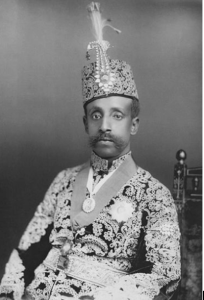
Nawab Syud Hassan Ali Mirza.
In December 1888, not long before the Murshidabad Exhibition, the Nawab was among the many Native Princes who went to Calcutta to pay their respects to the departing and incoming Viceroys.[37] Troubled by the legal discord involving Sarah Begum, the Nawab, while in Calcutta, solicited the advice of Tarini Prasad Jyotishi, a Hindu spiritual healer who was known to Olcott. By examining a certain sign on the Nawab’s leg, Jyotishi told the Nawab “that he would suffer from Paralysis in a year’s time which would prove rather dangerous to his life.”[38]
← Table Of Contents →
SOURCES:
[1] “Opening Of The Murshidabad Exhibition.” The Englishman’s Overland Mail. (Calcutta, India) March 6, 1889; “The Murshidabad Exhibition.” The Madras Weekly Mail. (Madras, India) March 20, 1889; “Opening Of The Moorshedabad Exhibition.” Homeward Mail From India, China And The East. (London, England) March 23, 1889.
[2] Almost immediately after assuming his post as Collector of Murshidabad, Tuite-Dalton developed plans to hold an Exhibition in the city. [“The Inhabitants Of Murshidabad.” Civil & Military Gazette. (Lahore, Pakistan) February 25, 1888.] A meeting was held on June 24, 1888, under the Presidency of Tuite-Dalton at the Jubilee Hall, Murshidabad. The Nawab was present. The newspaper reports stated: “The object of the meeting was to collect subscriptions for the exhibition of local manufactures and agricultural products and implements embracing the whole district, which is to be held next February. Mr. Dalton explained the object of the Exhibition, laying stress on the point that the ivory and Bedri works, and the silk manufactures see specialties in the district, and as these are in a declining state, some encouragement to revive them is necessary. The Nawab Bahadur has subscribed Rs. 1,000 to the fund, and bas placed the Humayon Munzil at the disposal of the Executive Committee. Nawab -Raissun Nessa Begum Sahiba has subscribed Rs. 500, and Nawab Shuhirun Nessa Begum Sahiba Rs. 200, to the Exhibition turd. The meeting was largely attended and dissolved with a vote of thanks to the chair.” [“Proposed Exhibition At Moorshedabad.’” The Englishman’s Overland Mail. (London, England.) June 30, 1888.]
[3] “His Highness The Nawab Bahadur Of Murshidabad, K.C.I.E.” Civil & Military Gazette. (Lahore, Pakistan) December 27, 1888.
[4] “The Nawab Bahadur Of Murshidabad.” The Englishman’s Overland Mail. (Calcutta, India) March 27, 1889
[5] Ritchie, John Gerald. The Ritchies In India: Extracts From The Correspondence Of William Ritchie, 1817-1862. J. Murray. London, England. (1920): 369.
[6] The Calcutta International Exhibition was a world’s fair held in Calcutta, India, from December 1883 to March 1884.
[7] Cox, Edmund C. My Thirty Years In India. Mills & Boon. Limited. London, England. (1909): 48-49.
[8] Hart, H.G. Hart’s Annual Army List, Militia List, And Imperial Yeomanry List, And Indian Civil Service List, For 1890. John Murray. London, England. (1890): 892.
[9] Walsh, J.H. Tull. A History of Murshidabad District (Bengal): With Biographies of Some of Its Noted Families. Jarrold & Sons. London, England. (1902): 203-205.
[10] Majumdar, Purna Chundra. The Musnud of Murshidabad (1704-1904): Being A Synopsis of The History of Murshidabad for the Last Two Centuries. Saroda Ray. Murshidabad, India. (1905): 55-62.
[11] Cox, Edmund C. My Thirty Years in India. Mills & Boon. Limited. London, England. (1909): 36.
[12] “The Late Nawab of Murshidabad.” The Englishman’s Overland Mail. (Calcutta, India.) January 3, 1907.
[13] “The Nawab Nazim and His Claims.” Illustrated Berwick Journal. (Berwick, England) March 4, 1870; “The Late Nawab Nazim of Bengal.” The Indian Statesman. (Calcutta, India.) December 9, 1884.
[14] “The Extraordinary Anglo-Indian Marriage Case.” The Salisbury Times and South Wilts Gazette. (Salisbury, England.) August 15, 1885.
[15] Innes Lyn. The Last Prince of Bengal. The Westbourne Press. London, England. (2021): 75-134.
[16], Innes Lyn. The Last Prince of Bengal. The Westbourne Press. London, England. (2021): 75-134.
[17] Walsh, J.H. Tull. A History of Murshidabad District (Bengal): With Biographies of Some of Its Noted Families. Jarrold & Sons. London, England. (1902): 201; Cox, Edmund C. My Thirty Years in India. Mills & Boon. Limited. London, England. (1909): 40.
[18] “Installation of the Nawab of Moorshedabad.” The Indian Daily News. (West Bengal, India.) April 3, 1883.
[19] Olcott, Henry Steel. Old Diary Leaves: Volume II. Theosophical Publishing Society. London, England. (1900): 418-419.
[20] Majumdar, Purna Chundra. The Musnud of Murshidabad (1704-1904): Being A Synopsis of The History of Murshidabad for The Last Two Centuries. Saroda Ray. Murshidabad, India. (1905): 62; Charabarty, Rajarshi. “Murshidabad District Region: Transition from Pre-Colonial to Colonial Education System.” Proceedings of the Indian History Congress, 2017. Vol. LXXVIII. (2017): 700-707.
[21] “‘Red’ And ‘Green’ Suns.” The Boston Evening Transcript. (Boston, Massachusetts.) December 15, 1883.
[22] “Wednesday Evening, September 26.” The Evening Standard.” (London, England) September 26, 1883.
[23] Olcott writes: “The autumn of 1883 and the succeeding few months were noteworthy for the occurrence of brilliant phenomena in the western sky in every part of the globe, but especially in the Indian ocean and the South Pacific. Shortly after sunset a vivid red glow suffused the entire western sky, remaining for upwards of an hour, when it would slowly fade away. This strange sight was first noticed in India, where, it is said, the sun assumed a distinct greenish tinge on nearing the horizon. In the latitudes of N. Am. these red sunsets were of almost nightly occurrence for several months. All of us at Adyar can bear testimony to the greenish afterglow and to its great beauty as a new element in the color scheme. The delicacy of the tint was indescribable, it was, as it were, a sublimation of the hue of the emerald, such as one finds in rising to supramundane planes.” [Olcott, Henry Steel. Old Diary Leaves: Volume VI. Theosophical Publishing House. Adyar, Madras. India. (1935): 196.]
[24] “Recent Terrestrial Convulsions.” The Sun. (New York, New York) October 19, 1883.
[25] “Obituary.” The Times of India. (Bombay, India) September 28, 1883.
[26] Innes Lyn. The Last Prince of Bengal. The Westbourne Press. London, England. (2021): 75-134.
[27] Olcott, Henry Steel. Old Diary Leaves: Volume II. Theosophical Publishing Society. London, England. (1900): 418-419.
[28] “2nd September.” The Madras Weekly Mail. (Tamil Nadu, India) September 5, 1885; “News From The Branches.” Supplement To The Theosophist. (September 1885): 311-314; Olcott, Henry Steel. Old Diary Leaves: Vol. III (1883-1887.) The Theosophical Publishing Society. London, England. (1904): 274-275.
[29] Walsh, J.H. Tull. A History of Murshidabad District (Bengal): With Biographies of Some of Its Noted Families. Jarrold & Sons. London, England. (1902): 205.
[30] “The ’Calcutta Gazette.’” The Englishman’s Overland Mail. (London, England.) November 29, 1887.
[31] Al Zaman, Abdullah; Monira, Nusrath Jahan. “A Study of Earthquakes in Bangladesh and the Data Analysis of the Earthquakes That Were Generated in Bangladesh and its’ Very Close Regions For The Last Forty Years (1976-2016.)” Journal Of Geology & Geophysics. Vol. VI, No. 4. (2017); “The Earthquake in Lower Bengal.” The Englishman’s Overland Mail. (Calcutta, India.) July 25, 1885.
[32] “The Extraordinary Anglo-Indian Marriage Case.” The Salisbury Times and South Wilts Gazette. (Salisbury, England.) August 15, 1885; Innes, Lyn. The Last Prince of Bengal. The Westbourne Press. London, England. (2021): 75-134.
[33] Olcott, Henry Steel. Old Diary Leaves: Volume III 1883-1887. Theosophical Publishing Society. London, England. (1904): 438.
[34] Olcott, Henry Steel. Old Diary Leaves: Volume III 1883-1887. Theosophical Publishing Society. London, England. (1904): 438; Theosophical Society General Membership Register, 1875-1942 at http://tsmembers.org/. See book 1, entry 4026 (website file: 1B/30) Fuzli Rubeee Nawab Dewan; Theosophical Society General Membership Register, 1875-1942 at http://tsmembers.org/. See book 1, entry 2615. (website file: 1A: 1875-1885) Janaki Nath Panni.
[35] Johnston, V. V. “Letters of Vera Johnston,” April 14, 1889 [g.], Berhampur, India, entry.
[36] Innes, Lyn. The Last Prince of Bengal. The Westbourne Press. London, England. (2021): 75-134.
[37] “The Nawab Of Murshidabad.” Civil & Military Gazette. (Lahore, Pakistan) November 24, 1888; “The Viceroy’s Visitors.” The Englishman’s Overland Mail. (Calcutta, India) December 11, 1888.
[38] “Social Calcutta.” Civil & Military Gazette. (Lahore, Pakistan) November 28, 1888; De, R.E. A Short Biography of Tarini Prasad Jyotishi. (The Indian Zadkiel.) R.E. Deb. Calcutta, India. (1902): 81-82, 126; Olcott, Henry Steel. Old Diary Leaves: Volume V. Theosophical Publishing House. Madras, India. (1932): 473-474.


